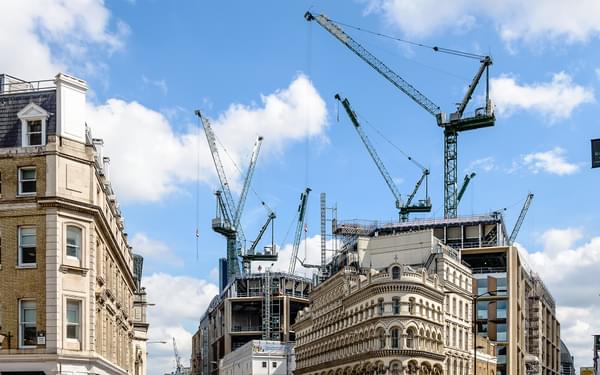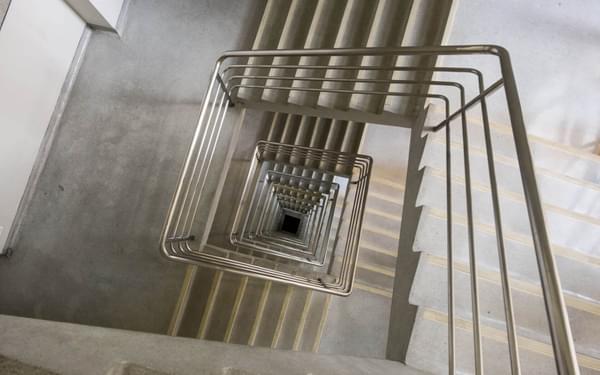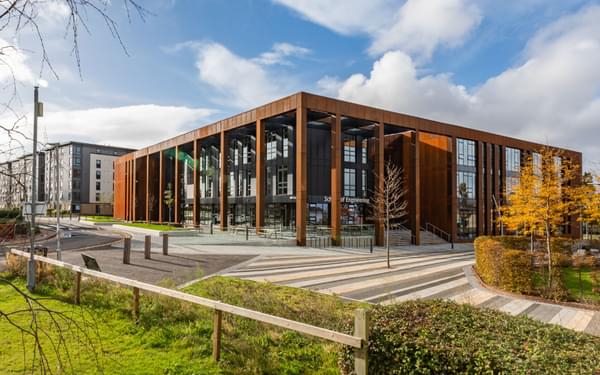Back to Articles
A two-tier system? Why we must embrace the digital golden thread across the built environment
23rd May 2023
The goal of the Building Safety Act is to improve building safety and protect the public from the risks of fire and other safety hazards in buildings. The act was introduced in response to Dame Judith Hackitt’s review following the tragic Grenfell Tower fire in 2017, which highlighted serious deficiencies in building safety.
Overall, the Building Safety Act aims to create a more robust regulatory framework for building safety in the UK, preventing similar tragedies from occurring in the future. It has been designed to ensure that the safety of residents and occupants is placed at the forefront of building design, construction, and maintenance.
To begin with, the Building Safety Act applies to all residential Higher Risk Buildings (HRBs), new and existing. (These are buildings that contain at least two residential dwellings; are over 18m or seven storeys in height; and hospitals and care homes.) They are required to create a digital golden thread of information, with serious consequences if they are found to falsify information. While new HRBs can start on the right foot, it is harder to capture historic information for existing residential Higher Risk Buildings, as the assets have aged and changed hands over the years.
It is possible that the implementation of the digital golden thread (DGT) could create a two-tier system between those assets that have a fully integrated digital record and those that can or will not, and that appears to be widely accepted.
What’s the difference between the Building Safety Act and the Digital Golden Thread?
The Building Safety Act is the full legislation that aims to bring about cultural change in the industry to make sure buildings are safe for people to live and work in. One part of this more rigorous regulatory framework is the launch of the Building Safety Regulator, whose role is to focus on encouraging professional competency. Another part is the requirement of all in scope buildings to possess a digital golden thread.
The digital golden thread is a term, referenced by Dame Judith Hackitt in her report, to describe the end-to-end digital information flow that connects different phases of a construction project. This includes the planning, design and construction to commissioning, operation and maintenance, handover, and ongoing operations.
The ambition of the digital golden thread is to create one seamless, accessible, flow of digital information. It puts in place a higher standard of information-keeping than the industry has used for decades, which then assures the new Building Safety Regulator that buildings are being managed safely.
The benefit is twofold; it can enable stakeholders to make informed decisions throughout the lifecycle of a project or asset, and can create an auditable trail of that decision making process, to hold those stakeholders accountable if necessary.
The principles of the digital golden thread are that it:
- Is accurate and trusted
- Allows residents to feel secure in their homes
- Supports culture change
- Is a single source of truth
- Is secure
- Drives accountability
- Is understandable/consistent
- Is simple to access
- Has longevity/durability and shareability of information
- Is relevant/proportionate
By capturing and sharing data in a structured and standardised way, the digital golden thread helps to improve collaboration, reduce errors, and increase efficiency. Naturally it also enables better management of building assets and better decision-making over the long-term.
“We have to highlight this - almost obsession - we see with some people to hold on to the need to comply with rules, and it being all about compliance. It isn't. It is about doing the right thing. It is about that ethical responsibility to deliver buildings that are safe for people to live in. ”
Dame Judith Hackitt, Building Safety Regulator Conference 2023
Don’t put off the digital golden thread
While these changes are long overdue and should be widely embraced, the practical elements, and cost, of applying them could be daunting. Creating a golden thread for existing buildings is not a quick or easy task.
In order to bed in the new complex process of the Building Safety Act and its secondary legislation, we risk creating, in the short term, a two-tier system of those that can apply the Act and those who cannot, and have to face the legal and financial consequences.
But it’s clear we have to start somewhere.
The current definition of an HRB is intentionally narrow – in order to start the process off. However, the Secretary of State has the power to extend The Building Safety Act’s reach very quickly, widening definitions to potentially apply it to multiple sectors other than residential, within a relatively short time.
Some industry professionals may believe the act in its current form will not affect them or the work they undertake. They run the risk of working now without the creation of a digital golden thread in mind, then becoming overwhelmed by possible future changes. As the act could soon apply to different building categories, the entire industry needs to be informed and prepared.
So, let’s not create a two-tier world of only applying the act to higher-risk buildings. Apart from avoiding a future headache, now is a great time to reassess our understanding of best practice as an industry. Let’s set a new gold standard and embrace the principles of the Building Safety Act across all buildings and at all RIBA stages.
Perhaps fire and structural safety are just the starting point? Gateway One could also expand beyond Approved Documents A (Structures) and B (Fire Safety) to apply to all Building Regulations Approved Documents. For example, people have recently died in the UK from exposure to mould and from carbon monoxide poisoning. If we’re truly making buildings as safe as possible, it’s feasible that the Building Safety Act could also enforce the Approved Documents relevant to those deaths (C, F and J).
Proactively creating a digital golden thread for all projects going forward, even if they are not a residential higher risk building, appears to be both the sensible and morally right thing to do. Dame Judith Hackitt delivered a chilling warning call to industry at the Building Safety Regulator’s 2023 conference: "We have to highlight this - almost obsession - we see with some people to hold on to the need to comply with rules, and it being all about compliance. It isn't. It is about doing the right thing. It is about that ethical responsibility to deliver buildings that are safe for people to live in."
The Building Safety Act: Changing the culture of construction
The intention of the Building Safety Act is to ensure that everyone can live and work in buildings that are safe and secure. In order for that to happen, it must create tectonic shifts in the culture of an industry that can be slow to embrace change. But that seems to be part of the problem – another tier appears to be arising beyond those who can create a digital golden thread or can’t – it’s whether they are willing to or would rather dig their heels in and continue with process as they always have done.
Of course, the majority of the industry is willing to change, but is scratching its head as to how. But for every trailblazer, dreaming up new software and methods of collaboration, there are traditionalists, stuck in old-school ways and looking to avoid this new legislation rather than learn valuable lessons.
There may be some feeling of refusal to embrace change in pockets of the industry – but as above, this legislation is here to stay, and will only grow in power. Widespread change may take around 15 years to become truly industry-wide. One thing is clear – it can’t happen overnight, but happen it must.
So, perhaps the Building Safety Act is not a two-tier system after all – improving structural and fire safety in residential higher risk buildings is just the starting point. All aspects of all buildings will catch up eventually. In embracing the digital golden thread, we can design, build and occupy new buildings now with long-term transparency, accountability and overall quality in mind – and be ready for changes when they come along, Future generations will thank us for it.
Building Safety Act: latest news
Stay informed with our dedicated newsletter featuring coverage from our conference and other quality content.















